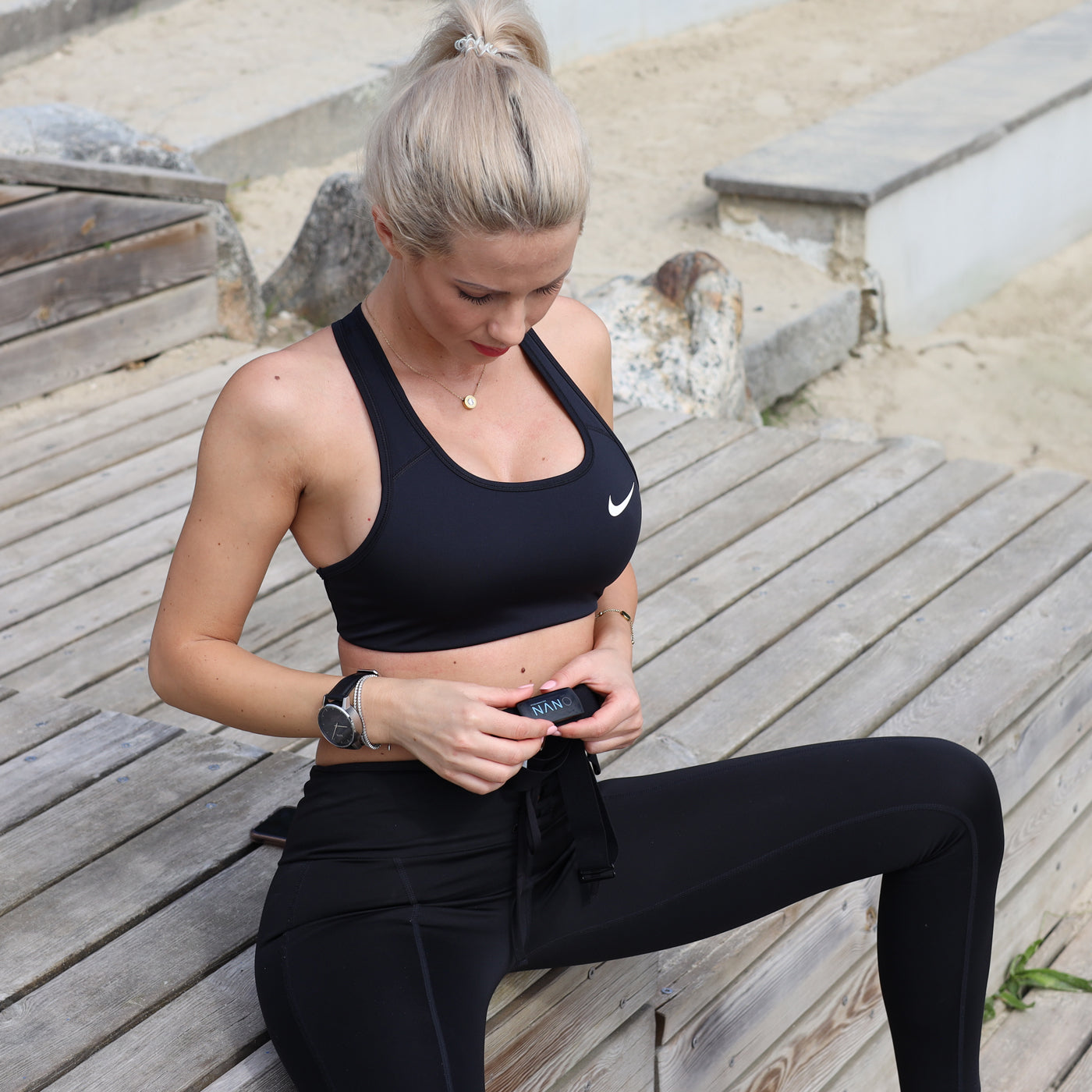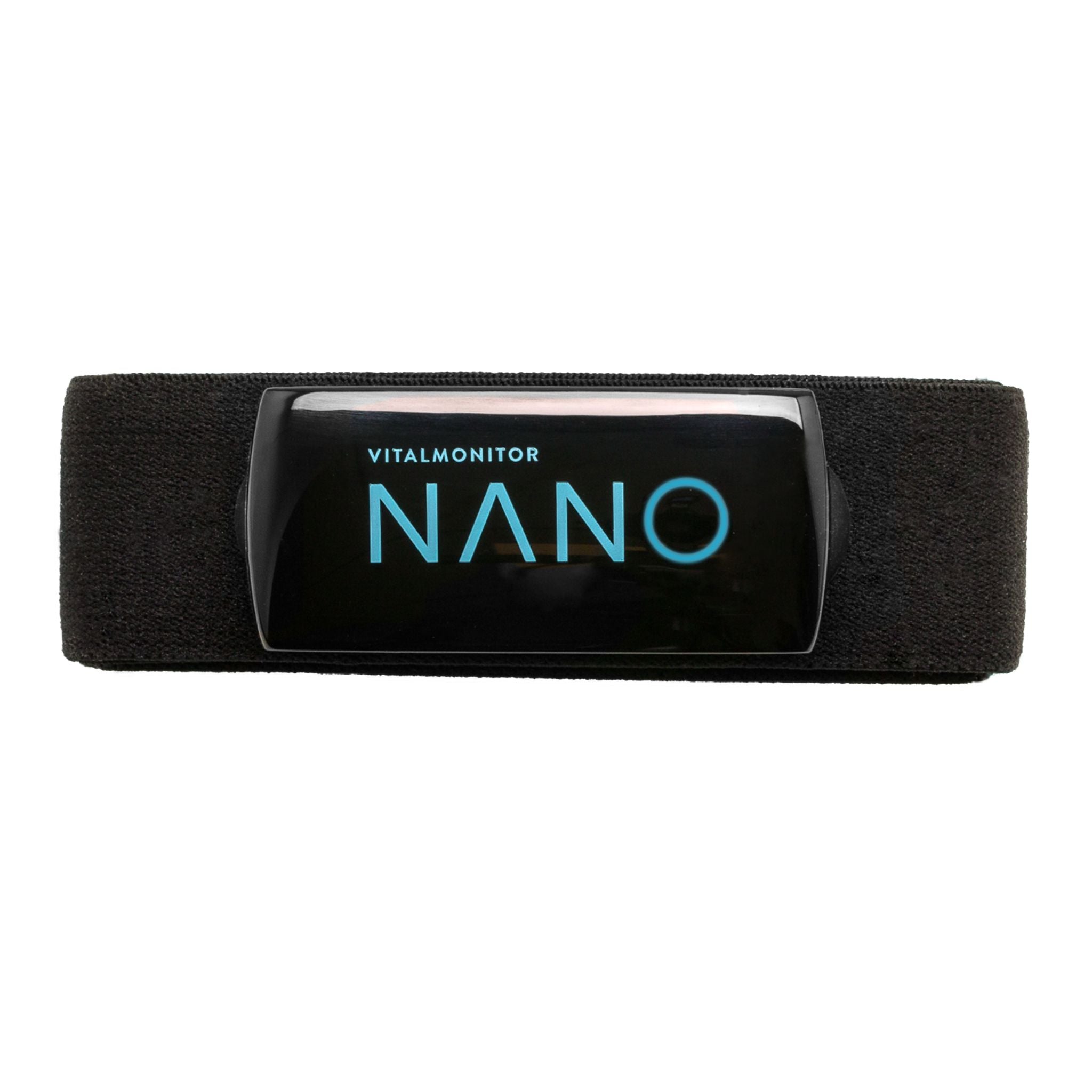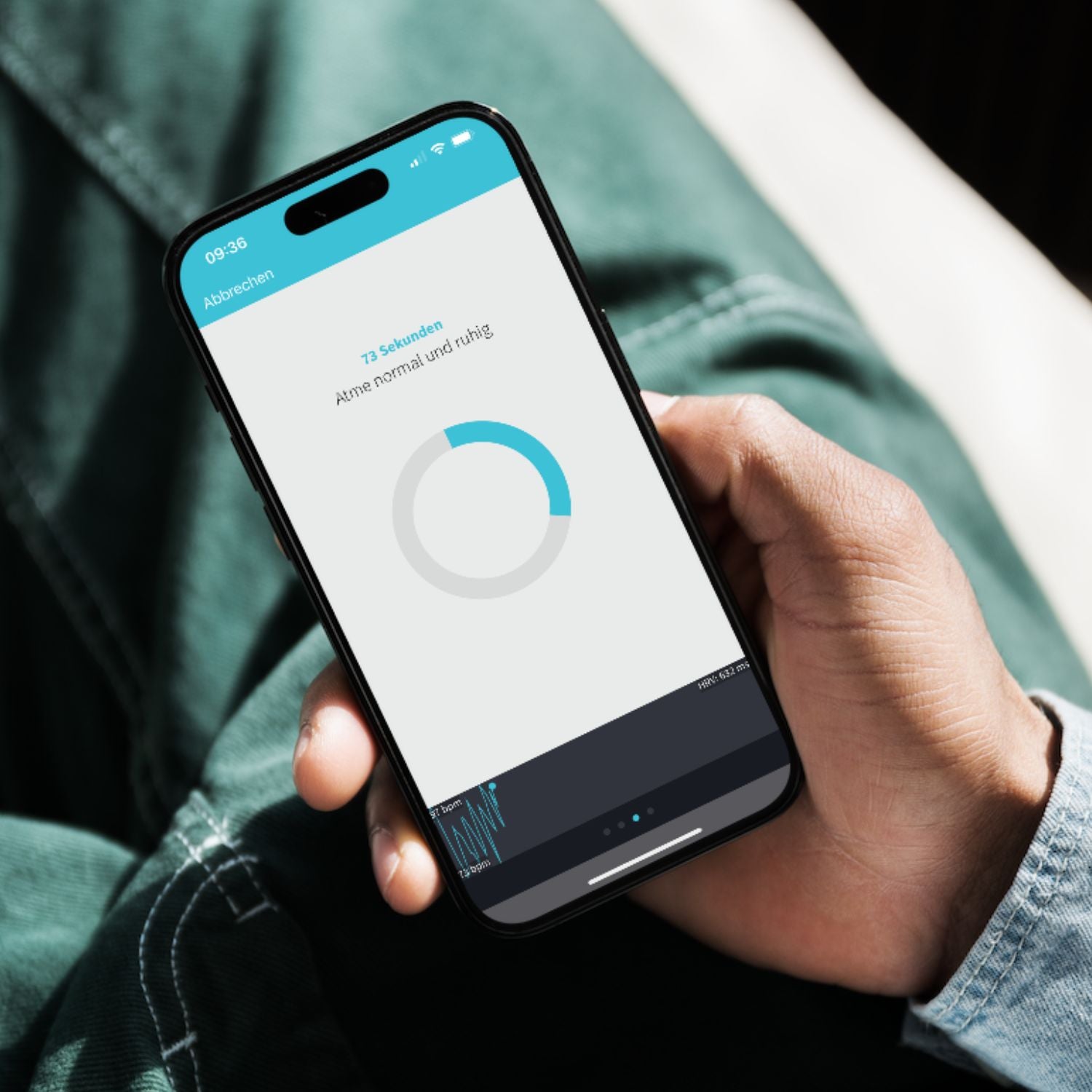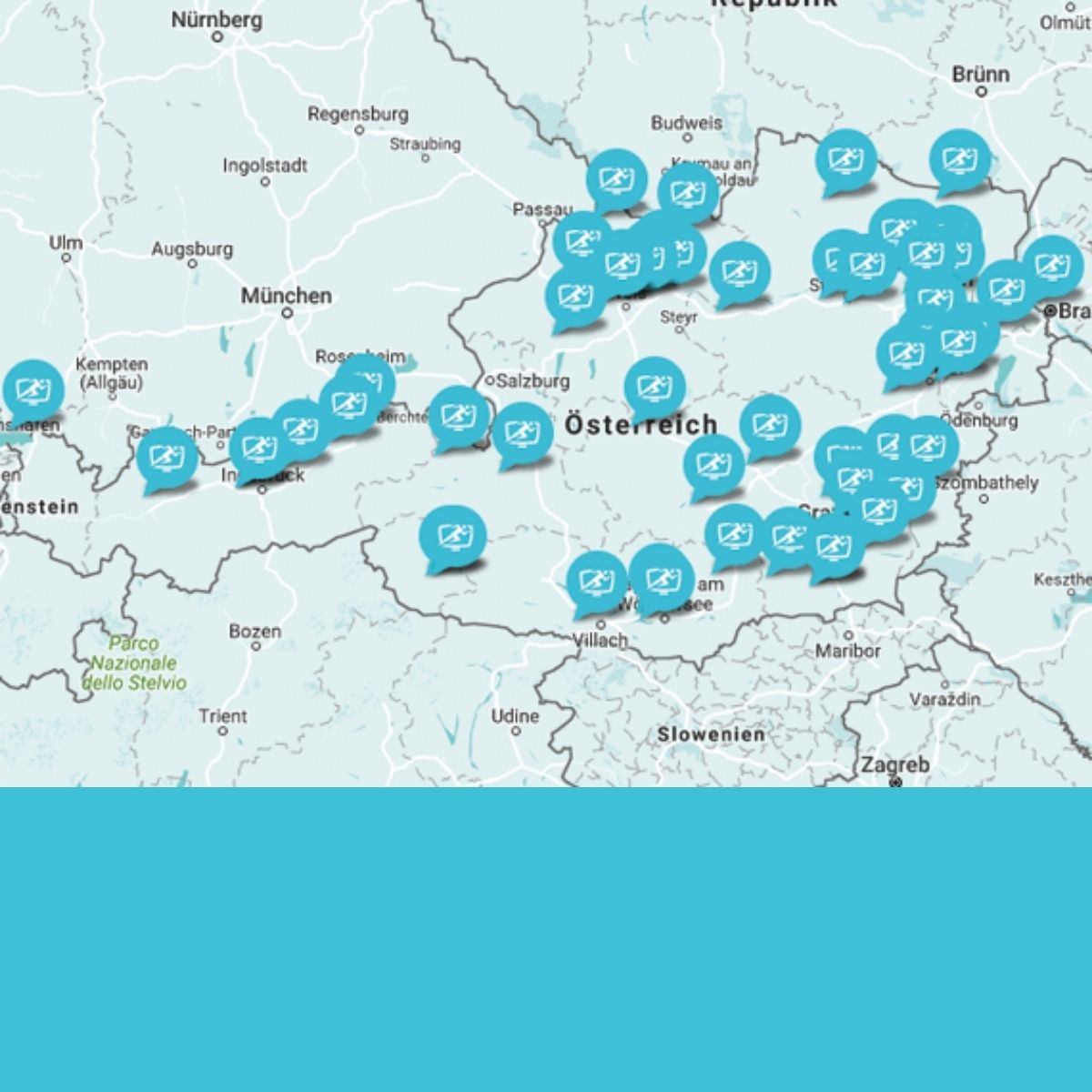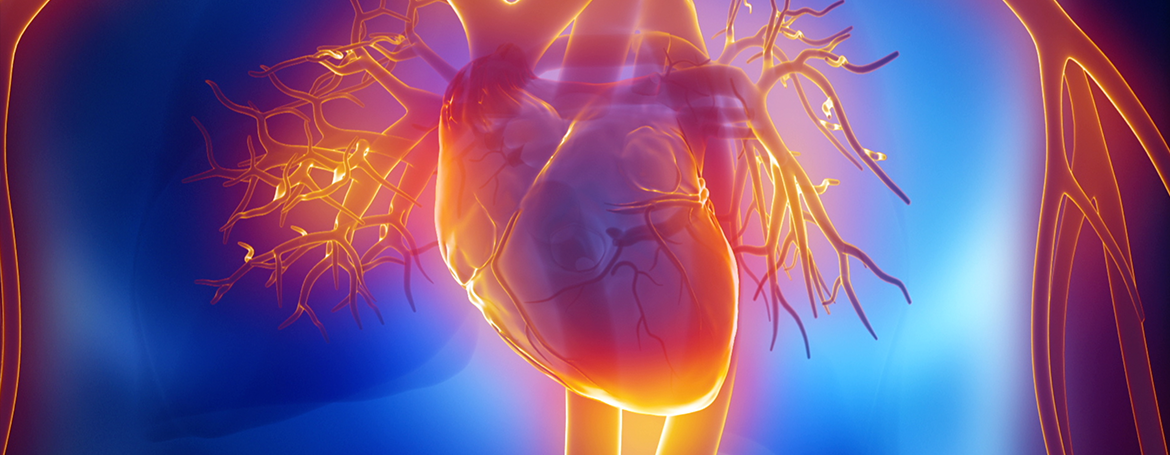As someone who is active in sports or is interested in health, you hear more and more often about the so-called heart rate variability . But it's not just laypeople who are increasingly interested in HRV; the number of scientific articles is also constantly increasing:
Studies on the topic of “heart rate variability”

What is heart rate variability?
HRV describes the change in the intervals between every 2 heartbeats . It is measured in milliseconds (i.e. the thousandth of a second). The greater the variability (i.e. the more different the individual distances are from each other), the better . Here you can see how HRV is calculated from an ECG:

Why is greater variability better?
Without deeper knowledge, one would assume that it is good for the heart to beat as evenly as possible. In reality, exactly the opposite is the case - but why? Every person has a variety of sensors in their body that provide important feedback for controlling the heart in order to optimally supply the entire body with blood. The sequence of the heartbeat is then influenced via the autonomic nervous system . If this influence works well, there is a strong variation in the heartbeat intervals and indicates relief. If this fine control works poorly or hardly at all, then the organism is stressed.
Do you want even more detailed information? Watch our webinar on the basics of heart rate variability here:
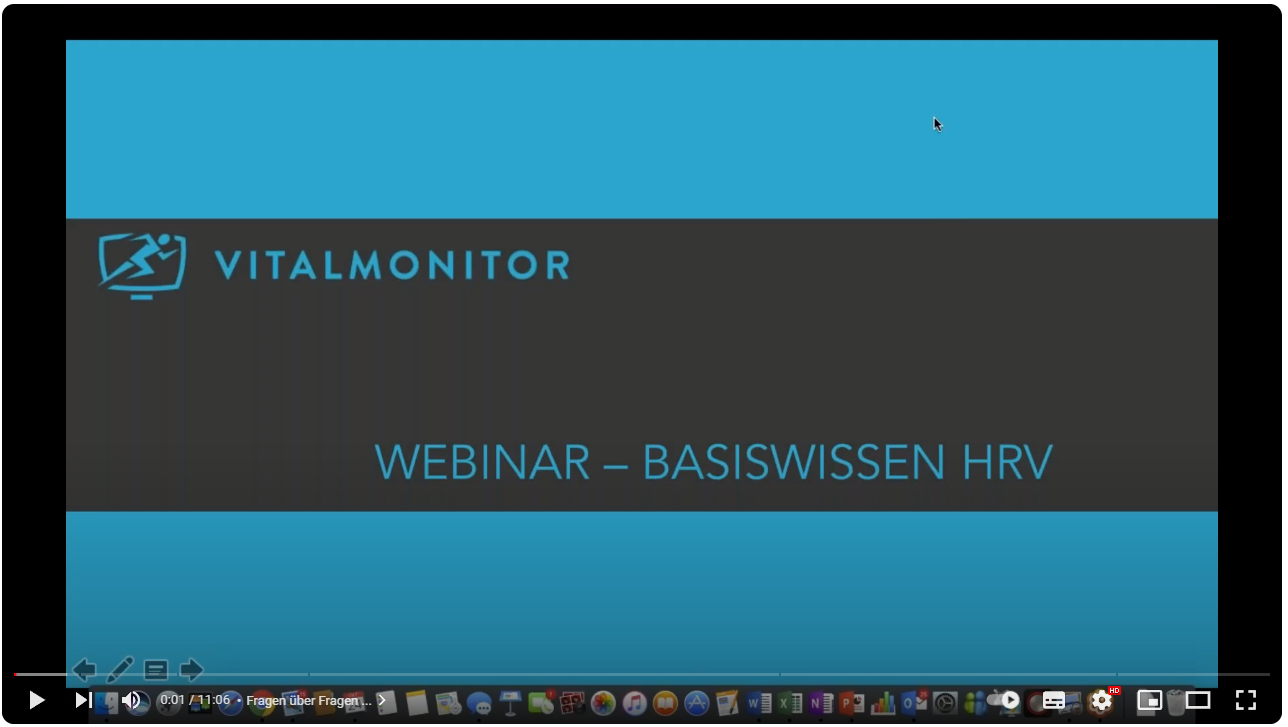
Video
History of HRV
The first documented use of heart rate variability goes back to the Chinese doctor Wang Shu-ho in the 3rd century AD, who recognized back then that a very regular heartbeat was a sign of poor health. He realized: "If the heartbeat is as regular as the knocking of the woodpecker or the dripping of rain on the roof, then the patient will die within 4 days." At that time, the sensitive intuition of an experienced doctor was necessary to recognize this condition. Today, 1700 years later, there are extremely accurate HRV measuring devices .
HRV nervous system
All vital functions of our organism are regulated by the autonomic nervous system. A measurement of the autonomic nervous system provides information about the current functional state of the organism. This is reflected in the organs. The autonomic nervous system regulates the heart to ensure optimal blood supply to the entire body. Various sensors report the condition of the vascular system and the heart. This regulates the heartbeat so that it provides optimal care. This is controlled by two opponents in the autonomic nervous system. If you are healthy, these two work together optimally. You can easily measure exactly this functioning of your HRV nervous system with the vital monitor. The vital monitor goes an important step further and prepares these results for you in easy-to-understand values such as stress, regeneration, training recommendations or BioAge.
- Sympathetic nervous system (activating – fight/flight)
- Parasympathetic nervous system (regenerative – system building/repair)
Areas of application of heart rate variability
HRV is primarily used in two areas: in sports and in health:
Training according to HRV
In order to align your training with your heart rate variability, it is necessary to measure it at least twice a day . To do this, it is almost mandatory to use an HRV measuring device that is calibrated to your body. HRV values are highly dependent on age and person. Only with a calibrated device can you be sure that training recommendations are precisely tailored to your body and your fitness . On days when your heart rate variability is high, you can do any workout - from light regenerative sessions to intense intervals to strenuous strength training. If your HRV is low, you should do light exercise or no exercise at all, depending on how low it is. Good apps show you this clearly.
Detecting overtraining through HRV - is that possible?
Yes, it works - if you take at least one measurement every day. You can recognize overtraining by the regeneration values that no longer recover. Good HRV apps show you this - here is an example from the Vitalmonitor portal:

Overtraining from mid-October. The solution: more recovery time or less stress to achieve greater regeneration.
HRV in the health sector
HRV as a stress indicator
In health management, heart rate variability is used to measure stress levels . This is usually done with the help of a calibration phase, as different people's stress resistance is very different. Good HRV apps use a mixture of heart rate variability itself and a breathing exercise . This determines how long the organism needs to adapt the heartbeat to the breathing target (the faster and stronger the connection between the heartbeat and deep breathing, the more relaxed the organism is).
BioAge as a measure of lifestyle
Another common value is the BioAge . It tells you how good your own HRV values are compared to other people. The lower the heart rate variability, the higher the biological age. The essence of this is that you can lower your BioAge through exercise/sports, nutrition, recovery & time management (check out a blog article on lowering your BioAge here).
HRV biofeedback
Biofeedback is about measuring biological processes and at the same time “training” them. Essentially, it is the targeted learning of activating the parasympathetic nervous system (sympathetic nervous system and parasympathetic nervous system are two opponents in the body. The sympathetic nervous system can be compared to an accelerator pedal - the parasympathetic nervous system is the brake). It is measured again with an HRV measuring device. The biofeedback exercises show:
- a graphical instruction on how to breathe and then record how the HRV behaves or
- you can influence what happens on the screen through your own breathing
By measuring and receiving feedback from your body functions via heart rate variability , you can learn to influence it. Through regular biofeedback exercises you can increase your HRV and strengthen your stress resistance .
FACTORS INFLUENCING HRV
The following factors lead to greater or lesser heart rate variability:
GREATER
- healthy eating
- balanced life
- regular exercise
- enough recovery time
SMALLER
- stress
- alcohol
- Overtraining
- nicotine
- caffeine
- no or lack of exercise
- Overweight
- during and immediately after physical exertion
Improvement in heart rate variability
After describing which factors influence HRV, it is relatively easy to improve heart rate variability. The options are divided into 4 main groups:
- Exercise/sport: Whether exercise or sport depends on the initial situation. For example, overweight people should first start with exercise or light swimming training so as not to damage their joints. For all (hobby) athletes: Be careful, an intensive endurance or strength session increases possible stress (the same hormones are released during intensive stress as during stress). This can also disrupt sleep.
- Nutrition: It is also possible to improve HRV with a healthy, balanced diet. The following measures promise rapid improvement : eat well before going to bed, eat fruit and vegetables 5 times a day, replace juices with water (juices often contain large amounts of sugar), avoid alcohol, pay attention to the ingredients in the food.
- Rest: Sleep accounts for the majority of human recovery. Important factors here are when you fall asleep, the duration and depth of sleep and screen work (smartphone, tablet, television, laptop) before going to bed. However, recovery stimuli can also be provided during the day through relaxation exercises. Examples of this would be yoga, autogenic training or biofeedback exercises, etc.
- Time management: If you learn to use time in the best possible way , then heart rate variability can also be improved. It is important to clearly delineate free time and working hours, clearly define the workload, avoid multitasking if possible and structure and prioritize the work. This reduces stress and allows for better use of recovery time.
Which HRV value is good?
This depends on several factors. Basically, heart rate variability decreases with age. What this looks like is shown in the following graphic:

However, as previously described, your own HRV can be strongly influenced by your lifestyle . What this can look like is shown in the following graphic:

The BioAge always indicates how good your HRV values are for your average age. If your biological age is higher than your actual age, you will have worse heart rate variability values than usual for your age. It's the same the other way around.
What devices are there to measure HRV?
There are basically several different ways to measure heart rate variability, which have different advantages and disadvantages :
Stand-alone devices
This class of device usually has a built-in ECG and therefore has a high level of accuracy . Short-term measurements are usually carried out using standalone devices. Another advantage is that you are supported by a professional partner who explains complicated HRV values. Disadvantages are very high costs for such a device and therefore high costs per measurement, since each measurement has to be carried out and interpreted by a partner. A single measurement also has little significance because it depends very much on the daily condition.
Portable devices
These devices have the advantage that they are usually cheaper than other HRV level measuring devices. They now almost achieve the accuracy of stand-alone ECG devices. There are 2 subcategories in this device class:
Devices that send the results directly to an app: These HRV measuring devices have the advantage that results are available immediately after a measurement. In addition, our own smartphones and tablets are usually used as evaluation devices, so that additional hardware costs are eliminated. The associated apps present the evaluation clearly. Better devices (such as the Vitalmonitor Nano ) are calibrated to your own body through regular morning measurements and therefore offer greater accuracy and better evaluations.
Devices that record data and are later evaluated: Recording here usually takes place over 24 hours. You receive a device including an explanation from a partner and start the measurement the next morning. The advantage here is that a whole day is recorded. The disadvantages are that
- a partner is necessary for the evaluation and explanation
- the statements depend on the state of the day
- The daily routines are similar and therefore rarely surprises come to light (HRV is usually good in the morning, stress reduces it, eating reduces it, during exercise it is reduced, relaxation exercises increase it, sleep increases it).
How much does an HRV measurement cost?
The costs depend heavily on the measuring device used. A one-time measurement (24h HRV) with a supervisor costs approx. €150-300/measurement . If you buy your own HRV measuring device with an app, the costs fall to less than €1/measurement after one year of use. In addition, you have constant monitoring of the HRV values and not just the picture from one day.
